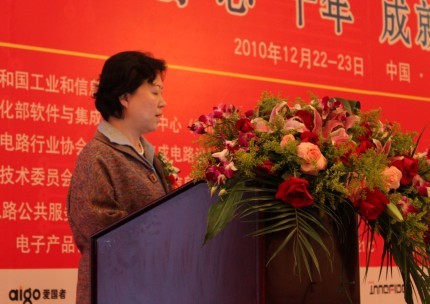薄膜晶體管和超大規(guī)模集成電路:競爭與合作
Thin-Film Transistor and Ultra-Large Scale Integrated Circuit:
icrosoft-com:office:office" />
Competition or Collaboration
Yue KUO
Thin Film Nano and Microelectronics Research Laboratory,
Thin-film transistor (TFT) and ultra-large scale integrated circuit (ULSIC) have been compared and discussed with respect to the development history, technology trends, and applications. Detailed issues on materials, processes, and devices in the largearea TFT array fabrication and nano-size metal–oxide–semiconductor field effect transistors (MOSFETs) composed ULSIC on large wafers were also examined. The TFT fabrication processes were originally derived from ULSIC. However, there are many unique large-area processes and theories developed during the study of the TFT array fabrication, which can greatly benefit the future large wafer ULSIC production process. Although their future applications will be in different areas, there are opportunities that TFTs can be integrated into ULSIC products to enhance the functions and performance.
[DOI: 10.1143/JJAP.47.1845]
KEYWORDS: thin-film transistors, TFTs, ultra-large scale integrated circuits, ULSICs
1. Introduction
Thin film transistor (TFT) is a metal–insulator–semiconductor field-effect transistor (MISFET) device similar to the metal–oxide–semiconductor FET (MOSFET) used in the ultra large scale integrated circuit (ULSIC). The original MISFET concept was reported 1925.1) The ULSIC era started after the first report of the solid state bipolar transistor in 1947, but the industry grew dramatically after the introduction of the MOSFET device in 1960. Today, most of the ULSIC products are for high speed, high density logics or memories used in computers and related products. The first TFT was reported in 1962 but the TFT liquid crystal display (LCD) industry boosted after the disclosure of the first hydrogenated amorphous silicon (a-Si:H) TFT in 1979.2) The TFT application is focused on one type of product, i.e., active matrix (AM) LCDs, although TFTs can be used into many other types of products, e.g., light emitting diodes (LEDs), electroluminescences (ELs), organic LEDs (OLEDs), field-emission displays (FEDs), and electrophoretic displays.3)
Figure 1 shows state-of-the-art substrate sizes for the TFT glass and the ULSIC wafer as well as their basic transistor structures. Each glass is divided into several display back planes each of which is composed of millions of TFTs and related storage capacitors interconnected with two or three levels of metal lines. Each wafer is divided into hundreds or thousands of dies each of which is composed of millions of billions of MOSFETs and related devices interconnected with more than ten levels of metal lines. Substrate sizes of the two technologies are very different. Currently, the state-of- the-art wafer size is
The IC industry blossomed with the introduction of complimentary MOSFETs (CMOSFETs) to memories and microprocessors in early 1970s. The worldwide ULSIC business was about $230B in 2006. The commercial production of TFT LCDs started quickly since the report of the first functional a-Si:H TFT in 1979. The first mass production of large-area TFT LCDs started in 1990 and the worldwide sale reached over $50B in 2006.6,7) Figure 2 shows the market value vs. the production year of the two types of products. For IC, the count started from 1970 when microprocessors were mass produced.6) For LC, the count started when 10.4-in. TFT LCDs were mass produced in 1990.7) In spite of the very small product range of TFTs, i.e., LCDs only, and the large product range of ICs, for the first 15 years, the former’s growth rate is larger than the latter’s rate. However, in this period of time, TFT LCDs are exclusively used for computers or instruments, which are dependent on the availability of ULSIC chips. Therefore, the current success of the TFT business is to a great extent contributed by ULSIC products, specifically the periphery drivers.












評論